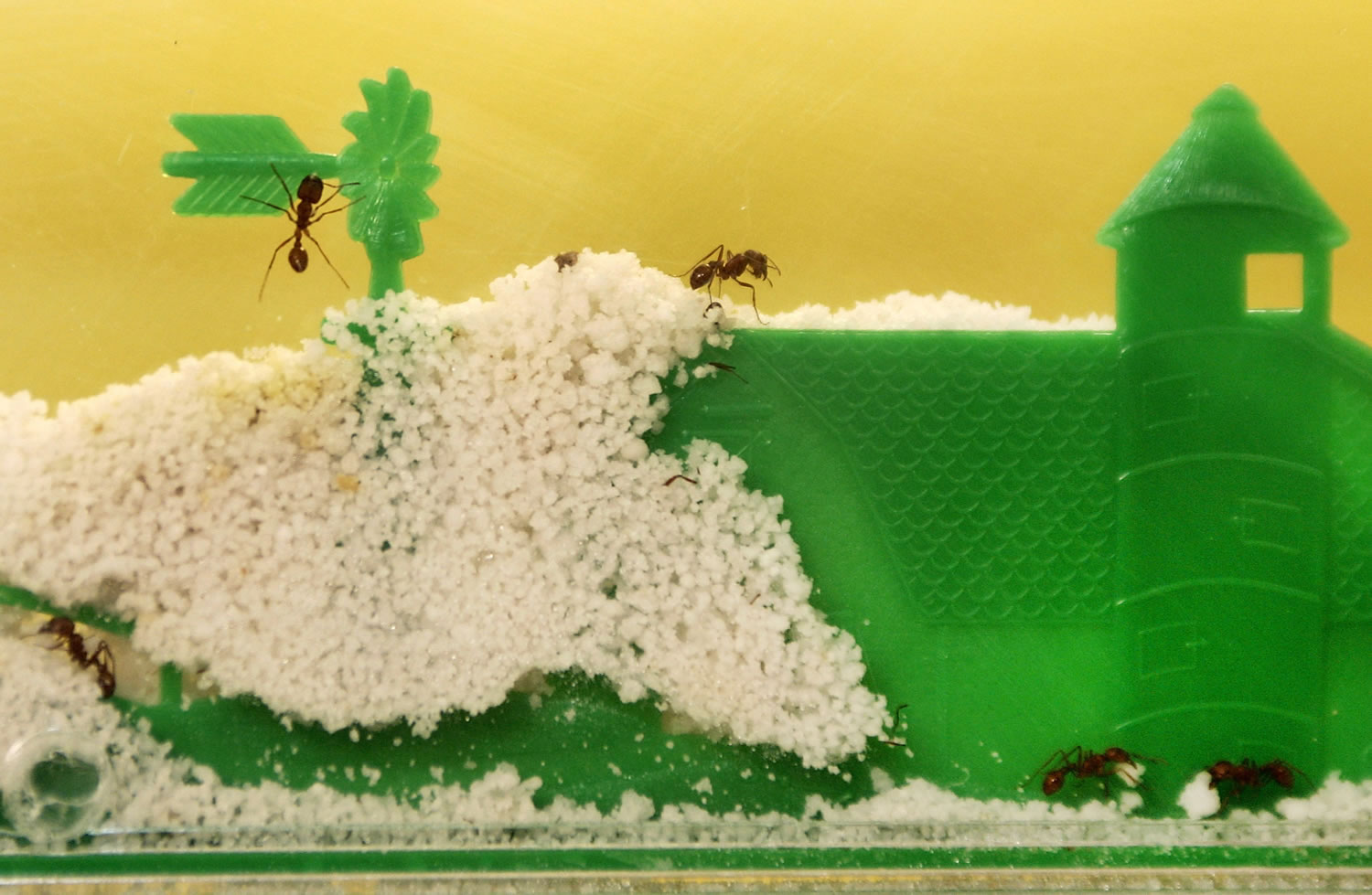LOS ANGELES — What does it take to elevate the common ant from picnic pest to household pet?
To thousands of children and many adults, the answer is a bit of soil and a see-through enclosure that can be made from an extra CD case or bought from a store.
Ant farms, the narrow glass or plastic containers filled with soil that mimic ant colonies, have been popular among generations of children. Marketers say they remain in demand even in the age of computers and video games.
Uncle Milton Industries, which has been in business for six decades, has sold more than 20 million ant farms. Founder Milton Levine and his brother-in-law invented the ant farm nearly 60 years ago.
“As the world gets more complex, some of these classic toys become more popular,” said Ken Malouf, vice president of marketing and product management.
Thousands of people enjoy insects as pets, and are willing to spend the time and money on them, said Lila Higgins, manager of the Citizen Science and Live Animals exhibit at the Los Angeles County Natural History Museum.
“We have 16,000 people come to our bug fair every year, and a lot of them buy or collect insects as pets. As long as we’re buying from responsible traders and collecting responsibly, I think the benefit (of taking queen ants) can far outweigh the cost to our environment,” she said.
Uncle Milton Industries’ ant farms come with 12 to 20 harvester worker ants. Queen ants are not included, so the colony will last about three months, Malouf said. A colony reproduces because of the queen, its sole fertile member. Her eggs can keep a colony going for years, Higgins said.
Noah Shryack of Stanton, Texas, “has loved ants since he was 1 or 2, and he put them in his bucket and tried to bring them in the house,” said his mother, Lana. She promised he could get an ant farm “when he was old enough,” which was at Christmas, when he was 5.
“He loves it. He checks every morning to see what the ants have done overnight,” said Shryack, who said she likes taking a look too.
Rachael Estanislao, an Atlanta blogger and mother of a 6-year-old boy, treats her son’s ant farm as an educational tool rather than a pet, although she has used the ants to teach him about caring for another living creature.
“It’s definitely like learning to have a pet. It’s about learning to respect their environment and helping them live healthy,” she said.
As an educational toy, she said it was one of the few that has kept her son, Anakin’s, interest.
Ant farms help kids discover nature and nurture curiosity about the world around them, Malouf said. Estanislao agreed, saying the farm taught Anakin about ant hills and the mounds he sees outside. Shryack said her son is amazed most by the large pieces of food the ants can carry and their teamwork in digging tunnels.
She said when some of the ants died, she also used it as a teaching moment.
“I just told him it is a normal process, and some live and some die.”
Those who want to build their ant farms can do so with a handful of CD cases and instructions that are readily available online. The trickiest part is filling the colony with harvester ants — the best type for keeping as pets — and catching a queen, since she has a lot of worker ants protecting her, Higgins said.
The best time to catch a queen, which is bigger than the worker ants, is after the mating flight, Higgins said. Once a colony is settled, it will become “quite a yearslong investment,” Higgins said.
Malouf doesn’t recommend toying leaving the ant farm in places where it can be knocked over by a pet or a human. Escapes, though feared by most parents, are unlikely because the seals around the farm are very tight, he said.



